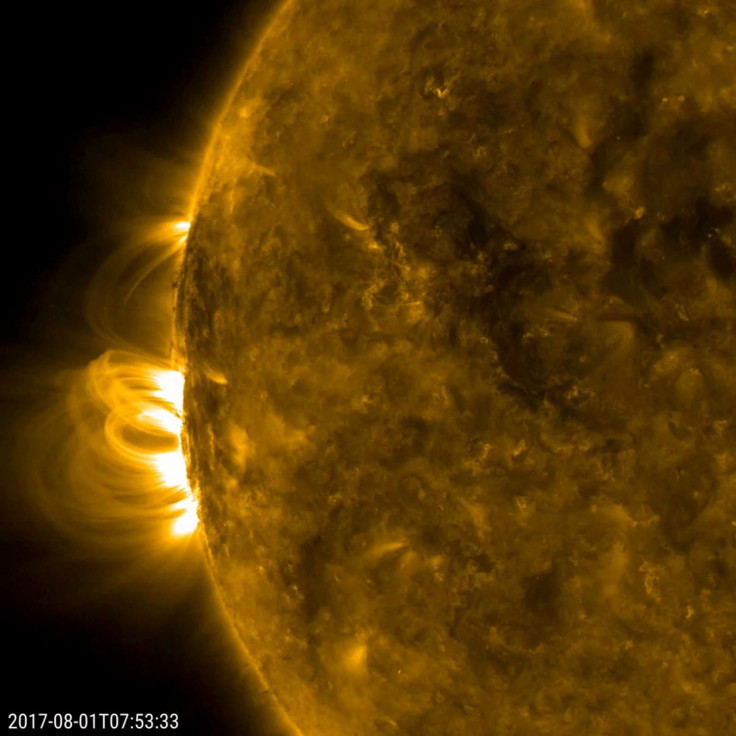Sun’s Developing Coronal Mass Ejection May Hit Earth Thursday, NOAA Data Reveals
KEY POINTS
- A recently discovered solar flare developed into a CME
- NOAA predicted that the CME may hit Earth on Thursday
- The CME could cause a minor geomagnetic storm
Data analyzed by the National Oceanic and Atmospheric Administration (NOAA) revealed that Earth may get hit by a coronal mass ejection (CME) from the sun on Thursday. The CME came from a slowly developing solar flare that was recently detected by the agency.
NOAA’s Space Weather Prediction Center (SWPC) recently spotted a developing solar flare on the sun using its Geostationary Operational Environmental Satellite.
The solar flare has been developing in the past couple of days, according to the data gathered by the agency. The SWPC predicted that it would eventually erupt into a CME.
Follow-up observations on the solar emission revealed that it has turned into a CME after a magnetic filament, which is a loop-shaped structure composed of dense gas, snapped on the surface of the sun, SpaceWeather.com reported. The site confirmed that debris from the filament formed the core of the CME, which is currently traveling across space.
After analyzing the trajectory of the CME, NOAA predicted that the solar emission will likely hit Earth on Thursday. If a direct collision occurs, the event will cause disruptions in Earth’s magnetic field. It could also trigger polar lights and geomagnetic storms in areas that will be affected by the solar event.
Fortunately, the SWPC noted that the CME was created by a B1-class solar flare, which is the weakest type. This means that only a minor geomagnetic storm would occur if the CME hits Earth.
“Clearly, the storm cloud is not heading directly for Earth,” SpaceWeather.com stated. “However, NOAA models of the CME's trajectory suggest it could deliver a glancing blow to Earth's magnetic field on August 20th. Minor geomagnetic storms and high-latitude auroras are possible when the CME arrives.”
According to the SWPC, geomagnetic storms affect Earth by producing various changes within the planet’s magnetosphere. These changes, which include the transfer of energy from the solar wind or CME to the magnetic field, can trigger electrical charges that can disrupt radio communication and electricity-based operations on Earth.
In other words, severe geomagnetic storms can cause power outages and disable satellite and radio communications for long periods.

© Copyright IBTimes 2024. All rights reserved.





















